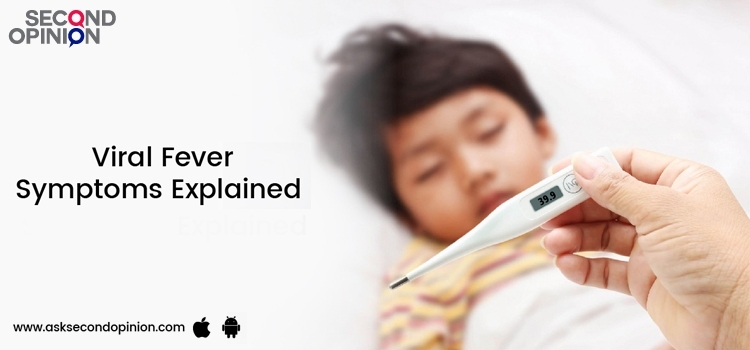
What is viral fever?
Most people have a body temperature of about 98.6 ° F (37 ° C). Anything above that is considered a fever. Fever is often a sign that your body is fighting some bacterial or viral infection, and viral fever is a fever caused by a primary viral disease.
A variety of viral infections, from the common cold to the flu, can infect humans. Mild fever is a sign of many viral infections. But some viral infections, such as dengue fever, can cause a high fever.
Fever at rainy season
Viral fever symptoms are similar to the common fever symptoms but ignoring them can make the condition serious as the virus is likely to develop in the absence of treatment. It is an infection caused by air and water. It is more during the rainy season.
Viral infection can occur at any age but is more common in children. Children are more likely to develop viral fever due to changes in the weather because they do not fully develop immunity.
Symptoms of viral fever
In such a situation, viral fever symptoms like tiredness, cough, infectious cold, vomiting, diarrheas are seen in children, and dehydration can also occur due to high temperature. Apart from this, there are some more common viral fever symptoms which are:
Fatigue – The body will start feeling tired. It would be a disaster to do any small work. Would love to lie in bed.
Muscle pain – Muscle pain is also a major symptom of viral fever.
Cough- Cough is also associated with a burning sensation in the throat, and there is a possibility of fever.
Joint pain – Pain in joints, especially in the hands and feet, is also a sign of fever.
Sore throat – There will be a sore throat and prick like a thorn. A cold drink will feel like drinking. Thirst will also increase.
Diarrhea – This is also a major viral fever symptom. Many people get diarrhea before they go viral. It occurs when there is a possibility of going viral due to a stomach infection.
Pain in head and eyes – Headache starts. Pain is felt just above the nose and around the eyes. There is a heaviness in the head.
Skin rash – Many people have red rash or rashes on their skin. This is also a sign of viral fever.
Eye-watering – Eyes become heavy before viral fever and water start flowing from the eyes.
Swelling on the face – Swelling appears on the face even during the day is one of the symptoms of viral fever.
Chills and shivering – If you are shivering and have a severe cold, you are crawling on the body, and at the same time, there is pain in the body. So understand that it is going to go viral.
Other causes of a virus and FUO:
Most viruses cause self-limited infections of a brief duration. However, cytomegalovirus, Epstein-Barr virus, adenovirus, hepatitis viruses, enteroviruses, and certain arboviruses can cause FUO (Fever of Unknown Origin). Symptoms and signs of these infections can be nonspecific and variable. Liver enzymes may be elevated. Viral cultures, serologic studies, and molecular techniques such as polymerase chain reaction can be used to facilitate the diagnosis.
Infections involving the bones and joints usually present with recognisable symptoms. However, occasionally FUO can be the only manifestation, especially in young children who cannot vocalise their symptoms. Get the right treatment or advice from the expert doctor through the online consultation called Ask Second Opinion. Finding the virus at an early stage will help you from the severe problem and stop your children before going to complex health conditions.
If you find any of the above symptoms, suddenly make a video call to the prime doctor and explain your health conditions. They will give you the best advice to solve your doubts and prescription to cure your health problem. Prevention is better than cure. Don’t waste your time by taking tablets on your own. In this app, specialist doctors will be available 24/7.
